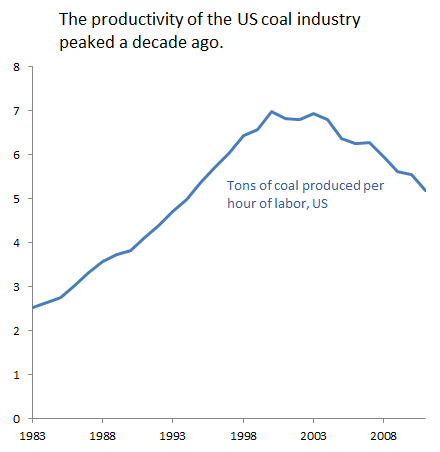Interesting factoid: an hour of labor produces about 25 percent less coal today than it did a decade ago.

Declining labor productivity means rising costs and slimmer profits for coal companies—adding to the woes of an industry that’s already reeling from slumping demand. But it’s not like the coal industry is doing something wrong to make productivity fall. It’s mostly a matter of geology: like any industry, coal miners started on the easy stuff—the coal that was closest to the surface and easiest to mine. But as the easy coal gets mined out, it gets harder and harder to get new coal out of the ground.
That’s the picture for the US as a whole—but the national picture includes the high-cost mines in Appalachia. So what about the western US with its cost-efficient (though environmentally troubling) strip mines?
Same basic story. Here’s a chart of the productivity of the nation’s highest-volume coal mine, the Black Thunder operation in Wyoming.

And as for Ambre Energy—the would-be coal exporter whose shaky finances we discussed last month—the labor productivity of their Decker mine is at its lowest point since at keast 1983. No wonder the mine is losing so much money…


Comments are closed.